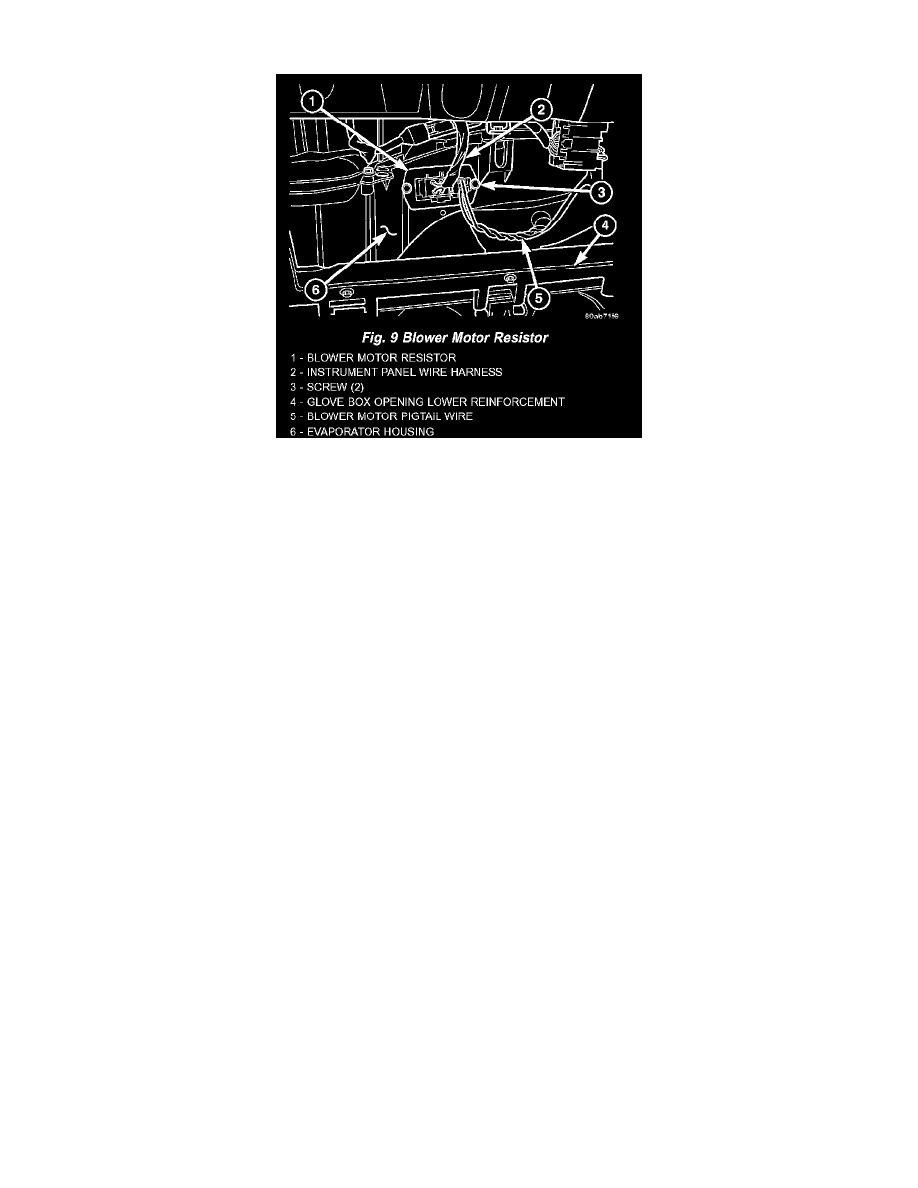Grand Caravan FWD V6-3.3L VIN 3 Flex Fuel (2002)

Blower Motor Resistor: Description and Operation
Fig.9 Blower Motor Resistor
FRONT BLOWER MOTOR RESISTOR
A blower motor resistor is used on this model when it is equipped with the manual heater-A/C control. Models equipped with the optional
Automatic Temperature Control (ATC) use a blower power module, instead of the blower motor resistor. The blower motor resistor is installed in
a mounting hole in the heater/AC housing, directly behind the glove box opening of the instrument panel. The resistor consists of a molded plastic
mounting plate with two integral connector receptacles. Concealed behind the mounting plate within the heater/AC housing are four coiled resistor
wires contained within a protective stamped steel cage. The resistor mounting plate is secured with two screws to the heater/AC housing and is
accessed for service by rolling down the glove box from the instrument panel.
The blower motor resistor wires will get hot when in use. Do not touch the resistor wires or the protective cage if the blower motor has been
running. The blower motor resistor cannot be adjusted or repaired and, if faulty or damaged, it must be replaced.
The blower motor resistor is connected to the vehicle electrical system through a dedicated take out and connector of the instrument panel wire
harness. A second connector receptacle receives the pigtail wire connector from the blower motor. The blower motor resistor has multiple resistor
wires, each of which will reduce the current flow through the blower motor to change the blower motor speed. The blower motor switch in the
manual heater-A/C control directs the ground path for the blower motor through the correct resistor wire to obtain the selected speed. With the
blower motor switch in the lowest speed position, the ground path for the motor is applied through all of the resistor wires. Each higher speed
selected with the blower motor switch applies the blower motor ground path through fewer of the resistor wires, increasing the blower motor
speed. When the blower motor switch is in the highest speed position, the blower motor resistor wires are bypassed and the blower motor receives
a direct path to ground through the blower motor switch. The blower motor resistor may be diagnosed using conventional diagnostic tools and
methods.
